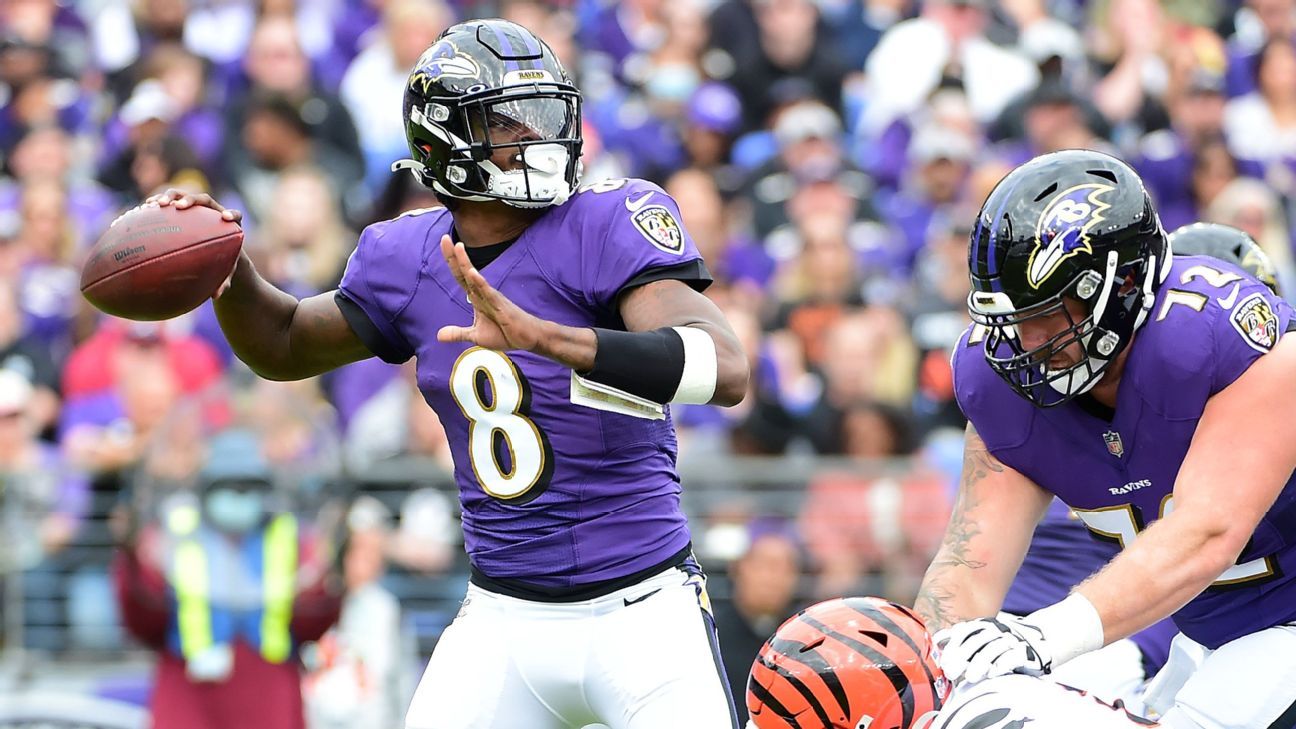
/arc-anglerfish-arc2-prod-tronc.s3.amazonaws.com/public/UMB456CLJJBF7AWLBTXQ5EMWN4.jpg)
Along with this he’s 67.5 percent of his passes, and pegged to throw 26 touchdowns this year. In 2021 he’s on pace for 4,777 passing yards (4,496 if we project against a 16 game season). Jackson is in his third year as a starter. While it’s true Jackson has the same scrambling, agile running style - when it comes to throwing the football they’re not remotely the same player. I’ve seen this said, and I have to assume it’s just from people standing around water coolers who don’t actually watch the Ravens.

1: Lamar Jackson is just Michael Vick 2.0 That said, let’s just dispel a few falsehoods about Lamar Jackson’s play. Perhaps that came along with the popularity of fantasy football or gambling, which placed an onus on predicting the future performance of players - but it’s unquestionably made it annoying for those who just like to see athletes play. We deny ourself the joy of going along for the ride and seeing each week as an adventure. I’m not sure when we became so obsessed with the minutia of how teams and players win games, and can’t just appreciate that they’re winning. Here’s the deal though: In the NFL the only thing that matters is results. “Can he win the big one?,” “is he a good enough passer?,” “how long until teams figure him out?” Things we never seem to direct at far worst quarterbacks who play “the right way,” which is standing in the pocket and throwing passes like they’re drawn up in a textbook. Cam Newton was a lightning rod for criticism when he arrived in the NFL, and was met with the exact questions Jackson now faces. This meant that while people either loved, or hated Vick, he was largely allowed to do his thing on the field without every single moment being questioned. This was before social media, a time where talking head analysis existed, but couldn’t be amplified to dominant the conversation. This vocal minority were quickly drowned out as most simply fell in love with seeing something utterly unique in the NFL. Yes, many people critiqued Vick’s play, and stodgy old football heads didn’t like that he was essentially a running threat first, and a passer second. Mobile quarterbacks existed long before, with Fran Tarkenton, Randall Cunningham and Steve Young to name a few - but it had been some time since the league saw someone dominate athletically from under center.ĭespite Vick’s arrival being a mere 20 years ago, the landscape was far different. The first modern iconoclast, Vick’s arrival as a full-time starter in 2002 immediately turned NFL thinking on its head. It’s part of a tried-and-true formula which has too often existed unique to black quarterbacks, and accelerated in the modern era with Michael Vick.

This is why when ESPN NFL analyst Mina Kimes spoke about the “moving goalposts” when it comes to Jackson, it resonated with so many of us that follow the game. Why do we feel this need to define what Jackson is, and what he isn’t? Moreover, why is there a constant need to continually bend over backwards to set up new challenges for the young quarterback to face before we dare to say “elite.” It’s not enough to simply appreciate the unique player he is, but instead there’s a desperation to put him in a box in order to fill discussion during the 24 hour news cycle. With every challenge faced, each test passed, the endless appraisal of Lamar Jackson continues.


 0 kommentar(er)
0 kommentar(er)
